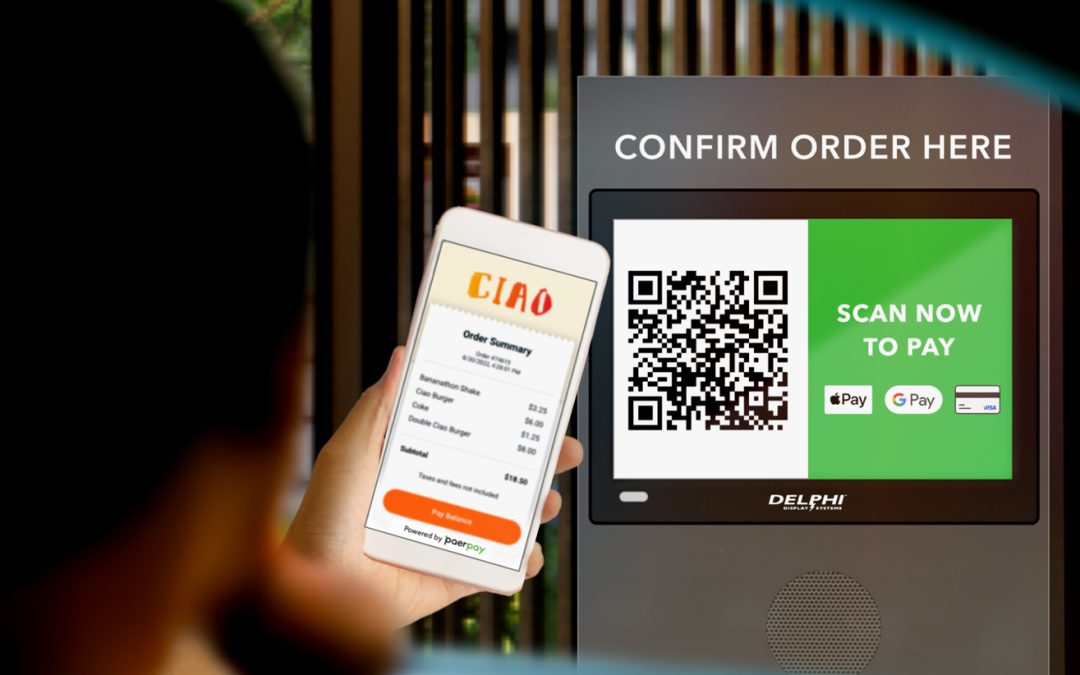The kiosk is coming for the drive-thru, too, under a new partnership between Delphi Display Systems and Paerpay.
Delphi, a provider of hardware for the quick-service industry, and Paerpay, a mobile payments provider, connected the dots (and their technology stacks) to speed up drive-thru lines. In locations using both platforms, customers can simply point their phone at a QR code in line, confirm their payment via various platforms from Apple Pay to credit card, grab their food and go.
Paerpay Chief Revenue Officer Rolf Gehrung, said the integration speeds things up, but there is a whole suite of tack-on benefits, as well.
“Over the past year, speed of service in most drive-thrus has increased by more than 25 seconds,” Gehrung said. “Leveraging mobile payment improves order accuracy, speed of service, and guest satisfaction for operators.”
Pearpay CEO Derek Canton said it was a perfect partnership that leans on his company’s speedy payment solutions and brings it to more than 40,000 locations across 75 countries. He said it’s a “near-term solution to deal with labor challenges without changing their point of sale (POS) or merchant processor.”
Delphi President and CEO Ken Neeld said he’s excited to see the new solution in the real world.
“By integrating this payment solution into our outdoor digital menu and order confirmation platforms, we can provide our customers with a mobile payment option that has been demonstrated to improve drive thru speed of service times while reducing labor costs and increasing sales,” said Neeld.
He and Canton mentioned installation is pretty easy, it’s a direct API connection in most cases and the software can be installed, staff trained and QR payments live in a matter of weeks. Once things are installed, it’s a matter of minutes to spin up the QR code specific to the drive thru.
The real-world numbers around those costs and benefits will come in time, but Canton said in test locations the effect was notable.
“By eliminating processing payments, staff can focus on what matters: efficiency and accuracy. While actual labor costs are not directly measured, our data reflects a savings of 12 seconds per transaction at the drive thru,” said Canton. “We also see the ticket size increase 10 percent on average when using our technology. With mobile payments, you’re expanding your guests’ wallet and giving them the power to choose how they want to pay.”
He said beyond payments, he’s excited about integrating with loyalty programs. Grabbing a customer’s attention while they are making a payment streamlines the sign-up process and integrates it into the same flow.
Neeld said he hopes the technology is rolled out to 1,000 locations by this time next year.
As for costs, Canton said it’s flexible. In some instances it’s a monthly software-as-a-service (SaaS) fee, in others it’s a transactional fee.
The companies are set to demonstrate the integrated solution at FSTec this month in Texas.


